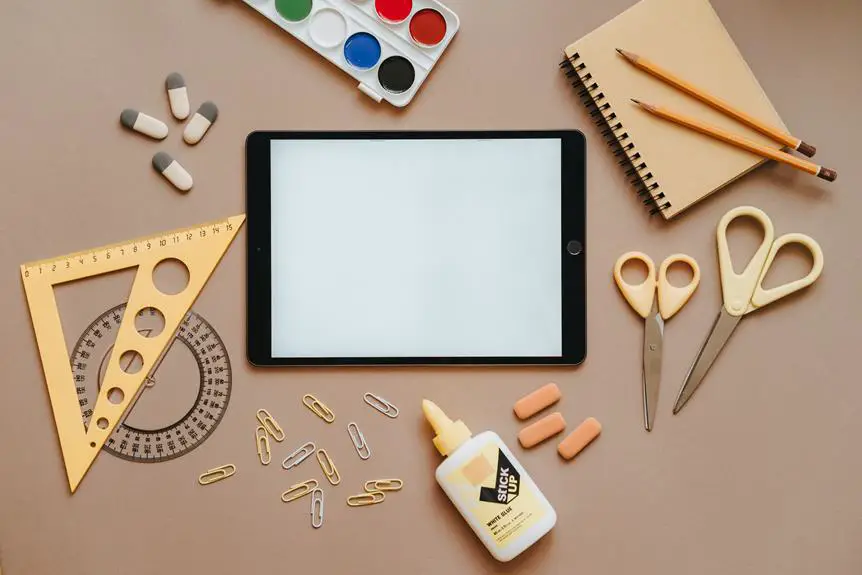Wondering if Gorilla Glue can bond with styrofoam? Understanding this adhesive's compatibility with the lightweight material is crucial. In this guide, we'll explore the factors affecting adhesion, the proper preparation and application techniques, and how to test the bond effectively.
By following these steps, you can master the art of bonding Gorilla Glue to styrofoam, ensuring a secure and durable connection. Whether for crafting, repairs, or DIY projects, achieving a successful bond can open up a world of possibilities.
Let's delve into the science of adhesion and unleash the potential of Gorilla Glue for styrofoam.
Key Takeaways
- Gorilla Glue is a polyurethane adhesive that bonds well with Styrofoam.
- Surface texture and porosity of Styrofoam can affect its ability to bond with adhesives.
- Chemical compatibility between the adhesive and Styrofoam is important for optimal adhesion.
- Proper preparation of the Styrofoam surface, including sanding and cleaning, improves the bond with Gorilla Glue.
Understanding Gorilla Glue and Styrofoam
You can easily understand how Gorilla Glue adheres to Styrofoam by examining its chemical composition and bonding mechanism. Gorilla Glue is a polyurethane adhesive that creates strong bonds with various materials, including Styrofoam. The key to its adhesion lies in the chemical compatibility between the glue and Styrofoam, allowing for a durable bond. When Gorilla Glue comes into contact with moisture, it undergoes a curing process that forms a strong and long-lasting bond with Styrofoam.
The bonding strength of Gorilla Glue is impressive, making it an excellent choice for adhering Styrofoam in various applications. It provides a secure and reliable bond that can withstand different environmental conditions.
However, it's essential to consider safety considerations when using Gorilla Glue, as it contains isocyanate compounds that may cause skin and respiratory irritation. Therefore, it's crucial to use Gorilla Glue in a well-ventilated area and take necessary safety precautions.
Factors Affecting Adhesion
When considering the adhesion of Gorilla Glue to Styrofoam, it's important to take into account several factors that can influence the bond.
The surface texture and porosity of the Styrofoam, the chemical compatibility with the adhesive, and the application pressure and time are all key aspects to consider.
Understanding how these factors affect adhesion can help you achieve the best results when using Gorilla Glue on Styrofoam.
Surface Texture and Porosity
To determine if Gorilla Glue can adhere to Styrofoam, it's important to assess the surface texture and porosity of the Styrofoam. The surface texture and porosity of Styrofoam significantly influence its ability to bond with adhesives.
Consider the following factors when evaluating Styrofoam's surface texture and porosity:
- Smoothness: A smooth surface may provide less area for the glue to grip, potentially affecting adhesion.
- Porosity: The presence of pores or gaps can impact how well the Gorilla Glue infiltrates and adheres to the Styrofoam.
- Surface area: A larger surface area may offer more contact points for the glue to bond with, enhancing adhesion.
- Absorbency: The absorbent nature of Styrofoam can affect how the Gorilla Glue sets and adheres to the material.
- Contaminants: Residues or contaminants on the surface can hinder the adhesive's ability to form a strong bond.
Understanding these factors is crucial when assessing the compatibility of Gorilla Glue with Styrofoam.
Chemical Compatibility With Adhesive
Assessing the surface texture and porosity of Styrofoam allows for an understanding of its chemical compatibility with adhesive and the factors affecting adhesion. Chemical compatibility is crucial for adhesive effectiveness.
When considering adhesive use on Styrofoam, it's important to understand how the chemical composition of the adhesive interacts with the Styrofoam surface. Certain adhesives may contain solvents or chemicals that can degrade or dissolve Styrofoam, leading to poor adhesion and potential damage to the material.
Conversely, adhesives specifically formulated for use with Styrofoam will have chemical properties that promote strong adhesion without compromising the integrity of the material. Understanding the chemical compatibility between the adhesive and Styrofoam is essential for achieving optimal adhesion and ensuring the longevity of the bond.
Application Pressure and Time
Considering the surface texture and porosity of Styrofoam, you should apply Gorilla Glue with consistent pressure and allow sufficient time for the adhesive to bond effectively. Proper pressure control and adhesive duration are crucial for achieving strong adhesion between Gorilla Glue and Styrofoam. Here are some key points to remember:
- Apply even pressure: Ensure consistent pressure is applied during the bonding process to maximize contact between the adhesive and the Styrofoam surface.
- Allow for curing time: Gorilla Glue requires adequate time to cure and form a strong bond. Allow the recommended curing time for the specific Gorilla Glue product you're using.
- Avoid excessive pressure: While consistent pressure is important, excessive pressure can squeeze out too much adhesive and weaken the bond.
- Use clamping when needed: For larger or complex bonding surfaces, consider using clamps to maintain consistent pressure during the curing process.
- Follow product instructions: Always follow the manufacturer's instructions for optimal application pressure and curing time.
Preparing Styrofoam for Gluing
You should lightly sand the surfaces of the Styrofoam to create a better bonding area for the Gorilla Glue. This step is crucial as it helps to roughen the Styrofoam surface, providing more grip and increasing adhesive compatibility. Use fine-grit sandpaper and gently sand the areas that need to be bonded. Be cautious not to apply too much pressure, as Styrofoam can be delicate and easily damaged. After sanding, remove any dust or debris from the surface by gently wiping it with a clean, dry cloth.
In addition to sanding, it's important to ensure that the Styrofoam surface is clean and free of any oils, dirt, or residues that could hinder the adhesive bond. You can use a mild detergent and water to clean the surface, and then thoroughly dry it before applying the Gorilla Glue. Properly preparing the Styrofoam surface will significantly improve the adhesion of the Gorilla Glue, resulting in a stronger and more durable bond.
Applying Gorilla Glue to Styrofoam
Once you've thoroughly prepared the Styrofoam surface, carefully apply Gorilla Glue sparingly, ensuring it covers the sanded area completely. When applying Gorilla Glue to Styrofoam, it's crucial to consider adhesive compatibility and proper application techniques. Here are some key points to keep in mind:
- Precision is Key: Applying Gorilla Glue to Styrofoam requires precision and care to ensure even coverage without excess glue seeping out from the edges.
- Sparing Application: Use Gorilla Glue sparingly on the Styrofoam surface to avoid creating a mess and to ensure a strong bond without excess glue interfering with the project's aesthetics.
- Even Distribution: Ensure that the Gorilla Glue is spread evenly across the sanded area of the Styrofoam to maximize the adhesive's effectiveness.
- Avoid Excess: Over-application of Gorilla Glue can lead to messy results and may compromise the structural integrity of the Styrofoam.
- Patience is a Virtue: Allow the glued Styrofoam to dry thoroughly according to the product's instructions before handling or further manipulating the project.
Testing the Bond
Once the Gorilla Glue has been applied to the Styrofoam, the next crucial step is to test the bond strength. By comparing the bonding strength of Gorilla Glue to other adhesives, you can determine its effectiveness for adhering to Styrofoam.
Additionally, the importance of proper surface preparation before applying Gorilla Glue can't be overstated, as it directly impacts the bond's durability and longevity.
Bonding Strength Comparison
To assess the bonding strength of Gorilla Glue on Styrofoam, test the adhesive's ability to withstand pressure and weight. This process allows for a direct comparison of the adhesive's effectiveness in bonding with Styrofoam, especially when compared to other types of adhesives.
- The satisfaction of witnessing the bond withstands significant weight and pressure.
- The anxiety of wondering if the bond will hold up under stress.
- The excitement of observing the adhesive's resilience to external forces.
- The relief of knowing the bond is secure and reliable.
- The confidence gained in the adhesive's ability to maintain a strong bond over time.
Through this testing process, you can truly understand the bonding strength and reliability of Gorilla Glue on Styrofoam, allowing for informed decision-making in various applications.
Surface Preparation Importance
Properly preparing the surface is crucial for testing the bond strength of Gorilla Glue on Styrofoam. Surface preparation plays a significant role in determining the adhesion factors between Gorilla Glue and Styrofoam.
To conduct a reliable test of the bond, ensure that the Styrofoam surface is clean, dry, and free from any dirt, dust, or debris. Additionally, consider roughening the Styrofoam surface slightly to create a better mechanical bond with the Gorilla Glue. This can be done using sandpaper or another abrasive material.
Proper surface preparation allows for a more accurate assessment of the bond strength, ensuring that the results reflect the true adhesive capabilities of Gorilla Glue on Styrofoam. By paying attention to surface preparation, you can obtain reliable and meaningful data regarding the adhesive performance.
Tips for Successful Bonding
Achieving strong bondings when using Gorilla Glue on Styrofoam requires following specific preparation steps. To ensure successful bonding, consider the following tips:
- Surface Cleaning: Thoroughly clean the Styrofoam surface to remove any dust, debris, or oily residue that may hinder the adhesive's effectiveness.
- Adhesive Application: Apply Gorilla Glue evenly and sparingly to the Styrofoam surface. Excessive glue can lead to messy, uneven bonding.
- Clamping: Secure the bonded surfaces with clamps or heavy objects to ensure even pressure and tight adhesion.
- Curing Time: Allow sufficient time for the glue to cure. Avoid disturbing the bond during this crucial phase to prevent weakening the adhesion.
- Environment: Ensure that the bonding process occurs in a well-ventilated area with moderate temperature and humidity levels for optimal results.
Safety Considerations and Conclusion
When using Gorilla Glue on Styrofoam, it's crucial to prioritize safety and follow the recommended guidelines for a successful and secure bond. Safety precautions should be strictly adhered to when working with Gorilla Glue. Ensure proper ventilation in the workspace to avoid inhaling fumes, and use gloves to protect your skin from potential irritation. Keep the adhesive away from children and pets, as it can be harmful if ingested. Additionally, be mindful of the potential risks of inhaling or getting the glue in your eyes.
In conclusion, while Gorilla Glue can effectively adhere to Styrofoam, it's important to recognize its limitations. The bonding effectiveness may vary depending on the specific type of Styrofoam and the conditions it will be exposed to. It's essential to consider the adhesive limitations and ensure that it's suitable for the intended application. By following safety precautions and being aware of the potential risks, you can achieve a successful bond while minimizing any hazards.
Always read and follow the manufacturer's instructions to ensure a safe and effective bonding process.
Frequently Asked Questions
Can Gorilla Glue Be Used on Other Types of Foam, Such as Foam Rubber or Polyurethane Foam?
When working with foam, it's important to consider foam compatibility. If Gorilla Glue doesn't suit your needs, consider adhesive alternatives designed specifically for foam rubber or polyurethane foam for better results.
What Is the Best Method for Removing Gorilla Glue From Styrofoam if the Bond Needs to Be Undone?
To remove Gorilla Glue from styrofoam, use safe solvents like acetone or isopropyl alcohol. Protect the surface to prevent future bonding. Gently wipe or soak the affected area, then carefully scrape away the glue residue using a plastic scraper or cloth.
Are There Any Specific Environmental Conditions That Can Affect the Bonding Process Between Gorilla Glue and Styrofoam?
Environmental factors such as moisture and temperature can significantly impact the bonding efficiency between Gorilla Glue and Styrofoam. High humidity or extreme temperatures may affect the adhesive's ability to adhere properly, so be mindful of these conditions.
Can Gorilla Glue Be Used to Fill Gaps or Cracks in Styrofoam, or Is It Strictly for Bonding Two Pieces Together?
Yes, Gorilla Glue can be used to fill gaps or cracks in Styrofoam. It is also effective for waterproofing. The adhesive properties of Gorilla Glue make it suitable for various applications beyond just bonding two pieces together.
Are There Any Special Considerations for Using Gorilla Glue on Styrofoam in Outdoor or High-Temperature Environments?
When using Gorilla Glue on styrofoam in outdoor or high-temperature environments, consider its outdoor durability and temperature resistance. Ensure proper application and curing to maximize its effectiveness in these conditions.
- How Does Ring Spun Cotton Affect Garment Fit and Shape Retention? - August 13, 2024
- What Are the Challenges in Producing Ring Spun Cotton? - August 13, 2024
- Is Ring Spun Cotton Suitable for Plus-Size Clothing? - August 13, 2024







